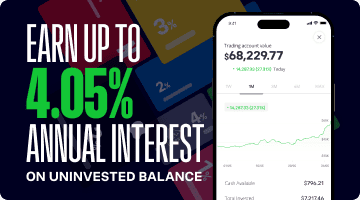Every era of investing has its “new, new thing”: railroads in the 1800s, the Nifty Fifty in the 1970s, dot-coms in the 1990s. Today, it is artificial intelligence. Like its predecessors, AI is genuinely transformative, but that doesn’t exempt its beneficiaries from the basic arithmetic of investing: value is determined by earning power, while price is shaped by the mood of the market. The gap between the two is where both opportunity and danger reside. Each shift has carried the promise of structural change, but also the risk of inflated expectations. AI is no exception.
The sharp rally in AI-related stocks has been followed by a recent pullback, sparking the inevitable question: are we witnessing the start of a bubble? The answer, I believe, requires more nuance than a simple yes or no. Valuations are elevated, optimism is abundant, but the hallmarks of outright mania, that is universal euphoria or indiscriminate buying, are not yet dominant. What we see instead is a market leaning heavily on optimistic assumptions about technologies whose long-term economics are still uncertain.
The landscape is diverse. The leading edge of the rally has been semiconductors. NVIDIA remains the clear frontrunner in AI chips, with demand from hyperscalers and enterprises still robust, while AMD is narrowing the gap with its own accelerator offerings. Yet even with strong earnings, both stocks trade at multiples that assume persistent dominance, a condition rarely guaranteed in such a fast-moving industry. The platform companies like Microsoft, Alphabet, Amazon, and Meta are in many ways better positioned, as they combine AI capabilities with diversified cash flows and entrenched customer bases. Microsoft’s integration of AI into Office and Azure is producing measurable revenue lift, while Alphabet’s search and cloud businesses are undergoing their own AI-driven evolution. Amazon and Meta, too, are deploying AI both to improve efficiency and to open new revenue lines. These firms may warrant premium valuations, but investors should remember that their sheer size means incremental growth is harder to achieve. Around them, a wider group of companies has been caught up in the “AI trade,” often with limited direct exposure. That tendency for themes to broaden beyond fundamentals is a warning sign seen in many past cycles.
The core issue is that current valuations already imply years, if not decades, of uninterrupted success. That makes future returns more vulnerable to disappointment, whether from competitive shifts, slower adoption, or simply the normal volatility of earnings. The real challenge is not identifying whether AI is important, it clearly is, but whether current valuations leave enough margin for error. History suggests that even extraordinary companies can disappoint if investors pay too much upfront.
How should investors respond? First, by distinguishing between genuine leaders and peripheral beneficiaries. Not every company with “AI” in its story will sustain long-term profitability. Second, by focusing on balance sheet resilience, cash-flow visibility, and pricing power: traits that support staying power if optimism fades. And finally, by remembering that in public markets, even the best narratives must clear the hurdle of valuation.
Technical signals offer a complementary perspective. For the most visible names such as NVIDIA and AMD, sustained trends above the 200-day moving average suggest continued leadership, while breakdowns through prior support levels can indicate a shift in sentiment.
AI is undoubtedly transformative. But history reminds us that transformative technologies and attractive investments are not always the same thing. Today’s prices reflect not just the future of AI, but also the optimism of investors. When expectations run far ahead of what businesses can deliver, returns tend to be modest and risks amplified.
This communication is for information and education purposes only and should not be taken as investment advice, a personal recommendation, or an offer of, or solicitation to buy or sell, any financial instruments. This material has been prepared without taking into account any particular recipient’s investment objectives or financial situation and has not been prepared in accordance with the legal and regulatory requirements to promote independent research. Any references to past or future performance of a financial instrument, index or a packaged investment product are not, and should not be taken as, a reliable indicator of future results. eToro makes no representation and assumes no liability as to the accuracy or completeness of the content of this publication.






